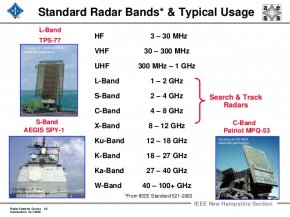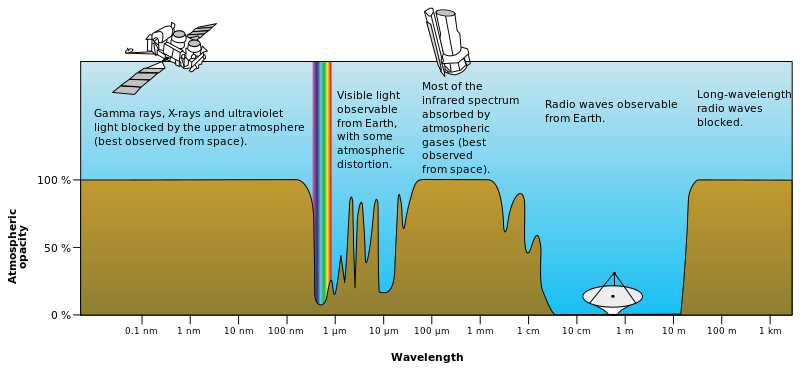S-band is kind of the
jack-of-all-trades band, if you wish. It is a good long range search radar, but also offers
enough "discrimination" to track for fire control at a greater distance than X-band. Typically, however, there is a hand over to a dedicated X-band radar (with better image resolution/discrimination) at some point in an active intercept scenario. The infographic below shows the difference in frequencies well (source IEEE).
Basically, rule-of-thumb, the higher the frequency, the shorter the wavelength, the shorter the range - but the better the radar return (or image). So, all things being equal, S-band (which is at a lower frequency, and longer wavelength) will get returns from further way than X-band, but the resolution of the imagery will be less than with X-band. You can overcome the X-band range limitation with
more power (as pointed out by the author in
@Black Jack Shellac's post) but the cost to do so increases dramatically. Thus the compromise combination of both an S-band radar (mostly for volume search), and X-band (for tracking and targeting) on most major naval warships. Another note, however, is that S-band discrimination is not as much of a real-life issue anymore, as the computing power and associated software algorithms can compensate for the lack of discrimination, to a large extent.
A good (though simplistic) analogy can be had with WiFi. WiFi typically operates at two different frequencies - 2.4 and 5.0 GHz. Anyone with a modern router that supports both will be able to attest to the fact that
at the same power levels you will be able to connect to the 2.4GHz band from further away than the 5.0 GHz,
but the 5.0 GHz band will be faster (more bandwidth). In this analogy, the 2.4GHz would be S-band (further distance/slower speed), and the 5.0 would be X-band (shorter distance/faster speed. Faster speed because more information can be transferred at the higher frequencies).
Excellent summation on S Band LRDR vs X Band SSR comparisons Calculus! Cheers!
View attachment 47085


